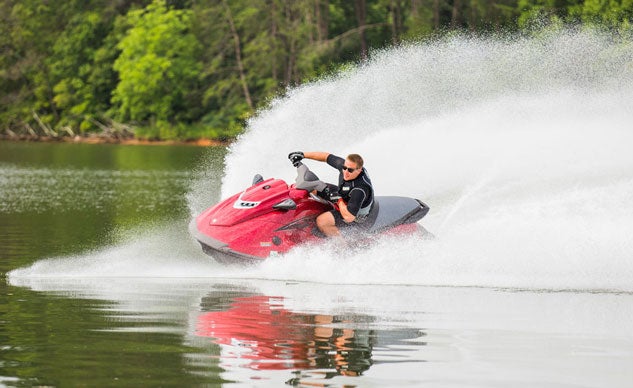How To Ride Your PWC To Match The Conditions
Adjust your riding to suit the water
We all have our “dream” conditions for riding a personal watercraft. To some of us, that’s when the wind is still, and the water takes on a mirror-like calm. For others, that’s when things get rough, and the waves provide a constant physical challenge. Your PWC is designed to handle both sets of conditions, but you need to play your part to exploit its strengths and get the absolute best ride. Here’s a few tips for both sets of water conditions.
Glassy Calm – Though certainly rare, there’s nothing like a glassy calm day to help you push your craft to the limit. In calm water, there’s no waves to unexpectedly knock you off your course or make you hold on for dear life. Instead, you can truly see what your hull and engine are capable of. The catch? If you’re not doing it right, you can also get in over your head pretty quick. One minute you’re railing through the perfect turn, the next you’re unexpectedly sailing off the high side, unable to keep your body planted in the seat because your craft is literally responding a little too well beneath you.
PWC are highly influenced by body weight, so play around with your stance as you work your way up to higher speed corners in calm conditions. Some old-school craft are going to need that weight pushed to the outside of turns to stay hooked up, an awkward position that will take a lot of upper body strength to hang on. Most modern craft, fortunately, favor some degree of inside lean, which is far more intuitive. The problem, however, is that often too much inside lean will allow the craft to skid out.

Vary your position to see what works best. As a rule of thumb, the best results are often obtained by leaning into the turn, but keeping your outside foot planted toward the rear of the footwell. This will result in a stance that varies depending upon which direction you’re turning, with the inside foot kept forward, and the outside foot leveraged against the footwell more toward the stern to keep the tail of the craft planted.
Depending upon the craft, you may also want to experiment with where you sit. On lightweight, agile craft, shifting your weight back further in the seat may also help keep the stern planted and allow you to keep a greater amount of speed through the corners.
Rough Water – When conditions turn sour – or if your typical ride is on a large body of water or coastal area that is frequently choppy – it’s often best to not sit at all, but instead crouch above the seat. This stance allows you to use your legs to absorb the jolts, rather than have them rattle right up your spine. Standing also allows you to see oncoming waves easier, giving you a higher vantage point to better read the water.
The tradeoff to this approach, however, is that your legs and lower back may tire quicker.

If you have a craft that features a bolstered saddle, here’s a good way to cheat. Move your position slightly back so that you’re sitting atop the first seat bolster. This will allow you to take some weight off your legs, but still get a softer ride than if you were fully sitting in the saddle. Most bolsters are soft enough that they will compress slightly under your weight.
And though it’s counterintuitive, you may also wish to speed up slightly in rough water, rather than slow down. Going faster often allows you to skip across the wave tops, rather than drop into the troughs between them.
Another suggestion is to consider using your craft’s speed governor. Your speed will be slowed, but so, too, will the jerkiness of the engine’s response, which will often result in a more gentle overall ride.
Get PersonalWatercraft.com in your Inbox!
Like PersonalWatercraft.com on Facebook
Comments
Most Popular

2025 Yamaha JetBlaster PRO 2-Up Review

2024 Kawasaki Jet Ski STX 160X Review

Remembering the Sea-Doo XP

Whatever Happened to the Wetbike?

2025 Yamaha JetBlaster Review













 Your Privacy Choices
Your Privacy Choices